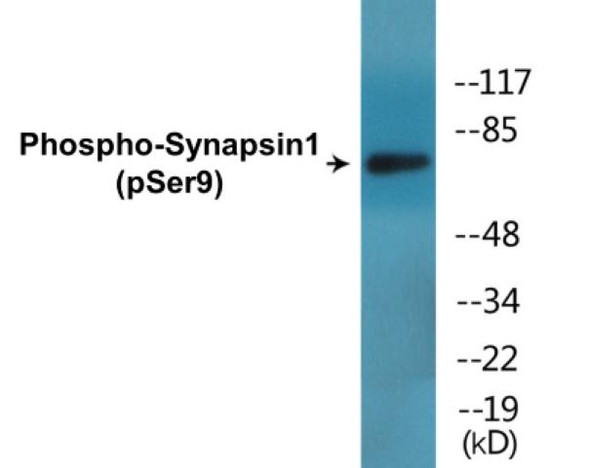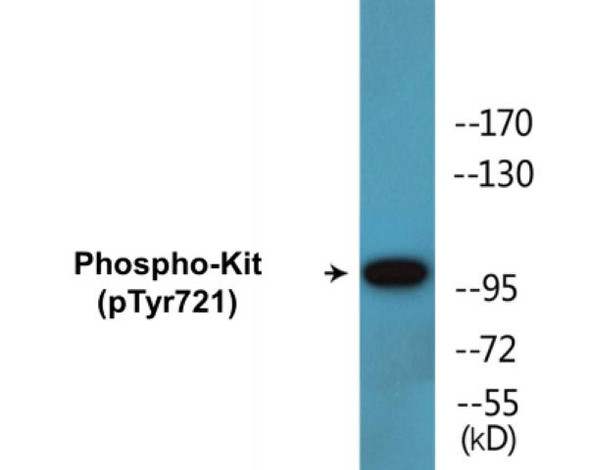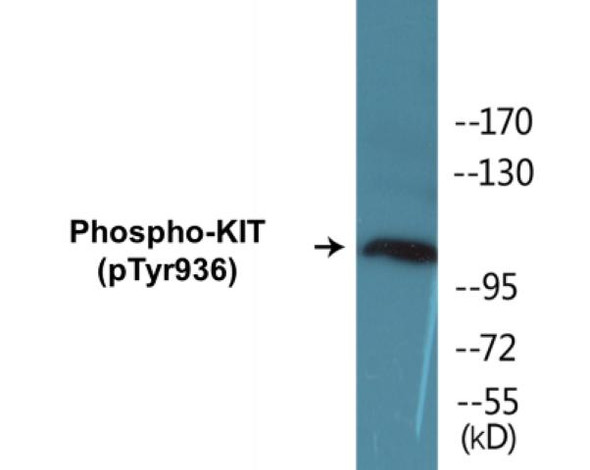GSK3beta (Phospho-Ser9)Colorimetric Cell-Based ELISA Kit (CBCAB00468)
- SKU:
- CBCAB00468
- Product Type:
- ELISA Kit
- ELISA Type:
- Cell Based Phospho Specific
- Research Area:
- Cell Biology
- Reactivity:
- Human
- Mouse
- Rat
- Detection Method:
- Colorimetric
Description
GSK3beta (Phospho-Ser9)Colorimetric Cell-Based ELISA Kit
The GSK3Beta Phospho-Ser9 Colorimetric Cell-Based ELISA Kit is a powerful tool for accurately measuring levels of phosphorylated GSK3Beta in cell lysates and tissue extracts. This kit offers high sensitivity and specificity, providing researchers with reliable and reproducible results for a variety of research applications.GSK3Beta is a key protein kinase involved in various cellular processes, including cell proliferation, differentiation, and apoptosis. Phosphorylation of GSK3Beta at Ser9 regulates its activity, making it a critical signaling molecule in pathways related to cancer, diabetes, and neurodegenerative diseases.
The ability to measure phospho-GSK3Beta levels accurately can provide valuable insights into disease mechanisms and potential therapeutic targets.Overall, the GSK3Beta Phospho-Ser9 Colorimetric Cell-Based ELISA Kit is a valuable tool for studying the role of GSK3Beta phosphorylation in cellular signaling pathways and disease progression. Its high sensitivity and specificity make it a reliable choice for researchers looking to advance their understanding of this important regulatory protein.
| Product Name: | GSK3beta (Phospho-Ser9)Colorimetric Cell-Based ELISA Kit |
| Product Code: | CBCAB00468 |
| ELISA Type: | Cell-Based |
| Target: | GSK3beta (Phospho-Ser9) |
| Reactivity: | Human, Mouse, Rat |
| Dynamic Range: | > 5000 Cells |
| Detection Method: | Colorimetric 450 nm |
| Format: | 2 x 96-Well Microplates |
The GSK3beta (Phospho-Ser9) Colorimetric Cell-Based ELISA Kit is a convenient, lysate-free, high throughput and sensitive assay kit that can detect GSK3 protein phosphorylation and expression profile in cells. The kit can be used for measuring the relative amounts of phosphorylated GSK3 in cultured cells as well as screening for the effects that various treatments, inhibitors (ie. siRNA or chemicals), or activators have on GSK3 phosphorylation.
Qualitative determination of GSK3beta (Phospho-Ser9) concentration is achieved by an indirect ELISA format. In essence, GSK3beta (Phospho-Ser9) is captured by GSK3beta (Phospho-Ser9)-specific primary antibodies while the HRP-conjugated secondary antibodies bind the Fc region of the primary antibody. Through this binding, the HRP enzyme conjugated to the secondary antibody can catalyze a colorimetric reaction upon substrate addition. Due to the qualitative nature of the Cell-Based ELISA, multiple normalization methods are needed:
| 1. | A monoclonal antibody specific for human GAPDH is included to serve as an internal positive control in normalizing the target absorbance values. |
| 2. | Following the colorimetric measurement of HRP activity via substrate addition, the Crystal Violet whole-cell staining method may be used to determine cell density. After staining, the results can be analysed by normalizing the absorbance values to cell amounts, by which the plating difference can be adjusted. |
| Database Information: | Gene ID: 2932, UniProt ID: P49841, OMIM: 605004, Unigene: Hs.445734 |
| Gene Symbol: | GSK3B |
| Sub Type: | Phospho |
| UniProt Protein Function: | GSK3B: a proline-directed protein kinase of the GSK family. Phosphorylates and inactivates glycogen synthase. Participates in the Wnt signaling pathway. Involved in energy metabolism, neuronal cell development, and body pattern formation |
| UniProt Protein Details: | Protein type:Protein kinase, CMGC; EC 2.7.11.26; EC 2.7.11.1; Protein kinase, Ser/Thr (non-receptor); Kinase, protein; CMGC group; GSK family; GSK subfamily Chromosomal Location of Human Ortholog: 3q13.3 Cellular Component: axon; beta-catenin destruction complex; cell soma; centrosome; cytoplasm; cytosol; dendritic shaft; dendritic spine; growth cone; lipid raft; mitochondrion; nucleus; perinuclear region of cytoplasm; plasma membrane; ribonucleoprotein complex Molecular Function:ATP binding; beta-catenin binding; integrin binding; ionotropic glutamate receptor binding; kinase activity; NF-kappaB binding; p53 binding; protein binding; protein kinase activity; protein kinase binding; protein serine/threonine kinase activity; tau protein binding; tau-protein kinase activity; ubiquitin protein ligase binding Biological Process: aging; axonogenesis; cell migration; circadian rhythm; dopamine receptor signaling pathway; epithelial to mesenchymal transition; ER overload response; establishment of cell polarity; fat cell differentiation; genetic imprinting; glycogen metabolic process; hippocampus development; myoblast fusion; negative regulation of apoptosis; negative regulation of dendrite morphogenesis; negative regulation of glycogen biosynthetic process; negative regulation of MAP kinase activity; negative regulation of neuron maturation; negative regulation of NFAT protein import into nucleus; negative regulation of nitric-oxide synthase activity; negative regulation of protein binding; negative regulation of protein complex assembly; organ morphogenesis; peptidyl-serine phosphorylation; peptidyl-threonine phosphorylation; positive regulation of axon extension; positive regulation of cell-matrix adhesion; positive regulation of GTPase activity; positive regulation of neuron apoptosis; positive regulation of peptidyl-serine phosphorylation; positive regulation of proteasomal ubiquitin-dependent protein catabolic process; positive regulation of protein binding; positive regulation of protein catabolic process; positive regulation of protein complex assembly; positive regulation of protein export from nucleus; positive regulation of smooth muscle cell proliferation; positive regulation of transcription from RNA polymerase II promoter; proteasomal ubiquitin-dependent protein catabolic process; protein amino acid autophosphorylation; protein amino acid phosphorylation; protein export from nucleus; re-entry into mitotic cell cycle; regulation of microtubule-based process; regulation of neuronal synaptic plasticity; response to activity; response to drug; response to estradiol stimulus; response to insulin stimulus; Wnt receptor signaling pathway; Wnt receptor signaling pathway through beta-catenin |
| NCBI Summary: | The protein encoded by this gene is a serine-threonine kinase, belonging to the glycogen synthase kinase subfamily. It is involved in energy metabolism, neuronal cell development, and body pattern formation. Polymorphisms in this gene have been implicated in modifying risk of Parkinson disease, and studies in mice show that overexpression of this gene may be relevant to the pathogenesis of Alzheimer disease. Alternatively spliced transcript variants encoding different isoforms have been found for this gene.[provided by RefSeq, Sep 2009] |
| UniProt Code: | P49841 |
| NCBI GenInfo Identifier: | 20455502 |
| NCBI Gene ID: | 2932 |
| NCBI Accession: | P49841.2 |
| UniProt Secondary Accession: | P49841,Q9BWH3, Q9UL47, D3DN89, |
| UniProt Related Accession: | P49841 |
| Molecular Weight: | 48,034 Da |
| NCBI Full Name: | Glycogen synthase kinase-3 beta |
| NCBI Synonym Full Names: | glycogen synthase kinase 3 beta |
| NCBI Official Symbol: | GSK3B |
| NCBI Protein Information: | glycogen synthase kinase-3 beta |
| UniProt Protein Name: | Glycogen synthase kinase-3 beta |
| UniProt Synonym Protein Names: | Serine/threonine-protein kinase GSK3B (EC:2.7.11.1) |
| Protein Family: | Glycogen synthase kinase |
| UniProt Gene Name: | GSK3B |
| UniProt Entry Name: | GSK3B_HUMAN |
| Component | Quantity |
| 96-Well Cell Culture Clear-Bottom Microplate | 2 plates |
| 10X TBS | 24 mL |
| Quenching Buffer | 24 mL |
| Blocking Buffer | 50 mL |
| 15X Wash Buffer | 50 mL |
| Primary Antibody Diluent | 12 mL |
| 100x Anti-Phospho Target Antibody | 60 µL |
| 100x Anti-Target Antibody | 60 µL |
| Anti-GAPDH Antibody | 60 µL |
| HRP-Conjugated Anti-Rabbit IgG Antibody | 12 mL |
| HRP-Conjugated Anti-Mouse IgG Antibody | 12 mL |
| SDS Solution | 12 mL |
| Stop Solution | 24 mL |
| Ready-to-Use Substrate | 12 mL |
| Crystal Violet Solution | 12 mL |
| Adhesive Plate Seals | 2 seals |
The following materials and/or equipment are NOT provided in this kit but are necessary to successfully conduct the experiment:
- Microplate reader able to measure absorbance at 450 nm and/or 595 nm for Crystal Violet Cell Staining (Optional)
- Micropipettes with capability of measuring volumes ranging from 1 µL to 1 ml
- 37% formaldehyde (Sigma Cat# F-8775) or formaldehyde from other sources
- Squirt bottle, manifold dispenser, multichannel pipette reservoir or automated microplate washer
- Graph paper or computer software capable of generating or displaying logarithmic functions
- Absorbent papers or vacuum aspirator
- Test tubes or microfuge tubes capable of storing ≥1 ml
- Poly-L-Lysine (Sigma Cat# P4832 for suspension cells)
- Orbital shaker (optional)
- Deionized or sterile water
*Note: Protocols are specific to each batch/lot. For the correct instructions please follow the protocol included in your kit.
| Step | Procedure |
| 1. | Seed 200 µL of 20,000 adherent cells in culture medium in each well of a 96-well plate. The plates included in the kit are sterile and treated for cell culture. For suspension cells and loosely attached cells, coat the plates with 100 µL of 10 µg/ml Poly-L-Lysine (not included) to each well of a 96-well plate for 30 minutes at 37°C prior to adding cells. |
| 2. | Incubate the cells for overnight at 37°C, 5% CO2. |
| 3. | Treat the cells as desired. |
| 4. | Remove the cell culture medium and rinse with 200 µL of 1x TBS, twice. |
| 5. | Fix the cells by incubating with 100 µL of Fixing Solution for 20 minutes at room temperature. The 4% formaldehyde is used for adherent cells and 8% formaldehyde is used for suspension cells and loosely attached cells. |
| 6. | Remove the Fixing Solution and wash the plate 3 times with 200 µL 1x Wash Buffer for five minutes each time with gentle shaking on the orbital shaker. The plate can be stored at 4°C for a week. |
| 7. | Add 100 µL of Quenching Buffer and incubate for 20 minutes at room temperature. |
| 8. | Wash the plate 3 times with 1x Wash Buffer for 5 minutes each time. |
| 9. | Add 200 µL of Blocking Buffer and incubate for 1 hour at room temperature. |
| 10. | Wash 3 times with 200 µL of 1x Wash Buffer for 5 minutes each time. |
| 11. | Add 50 µL of 1x primary antibodies Anti-GSK3beta (Phospho-Ser9) Antibody, Anti-GSK3beta Antibody and/or Anti-GAPDH Antibody) to the corresponding wells, cover with Parafilm and incubate for 16 hours (overnight) at 4°C. If the target expression is known to be high, incubate for 2 hours at room temperature. |
| 12. | Wash 3 times with 200 µL of 1x Wash Buffer for 5 minutes each time. |
| 13. | Add 50 µL of 1x secondary antibodies (HRP-Conjugated AntiRabbit IgG Antibody or HRP-Conjugated Anti-Mouse IgG Antibody) to corresponding wells and incubate for 1.5 hours at room temperature. |
| 14. | Wash 3 times with 200 µL of 1x Wash Buffer for 5 minutes each time. |
| 15. | Add 50 µL of Ready-to-Use Substrate to each well and incubate for 30 minutes at room temperature in the dark. |
| 16. | Add 50 µL of Stop Solution to each well and read OD at 450 nm immediately using the microplate reader. |
(Additional Crystal Violet staining may be performed if desired – details of this may be found in the kit technical manual.)






